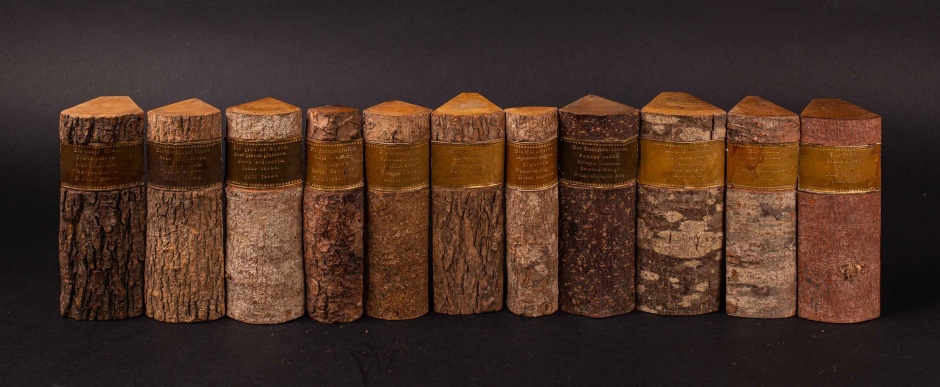A xylotheque is a special form of collection in which different types of wood are stored (the Greek word “xylon” means wood, while “theque” could be translated as storage). In the past, this term was used to mark wood collections in which the specimens were sawn in book form of books, and apart from wood other parts of the plant were often presented as well. The first xylotheques were created at the end of the 17th century when various types of wood were presented in departments of wonders. Eventually, the collections became more sizeable and systematically arranged. Today, they are used here and there for researching the anatomy of wood and its physical and mechanical properties.
The Provincial Museum of Carniola, too, once held a rich xyloteca – no less than 751 types of domestic and foreign wood are listed in the museum’s inventory book. In October 1831, when the Provincial Museum of Carniola was festively opened in the lyceum in the former Franciscan Monastery in Ljubljana, a part of this collection was put on display. In the first guide through the museum, we can read the following: “The glass display cabinet holds, under the third window, 108 Carniolan wood types from Carniola, sawn in book forms with labels as book titles; next to them we can see as many jars with seeds and fascicle with leaves and flowers.” The collection was donated to the Museum by the provincial governor Schmidburg Emeritus, and collected by Pinter, district forester at Šmohorje”. Wood samples are sawn in the shape of book spines. The names on them are written as addresses in golden letters: first German, Latin, Italian, Hungarian and only at the very end with the Slovenian name. Of the 108 native wood species on display, only 64 specimens have survived so far.


